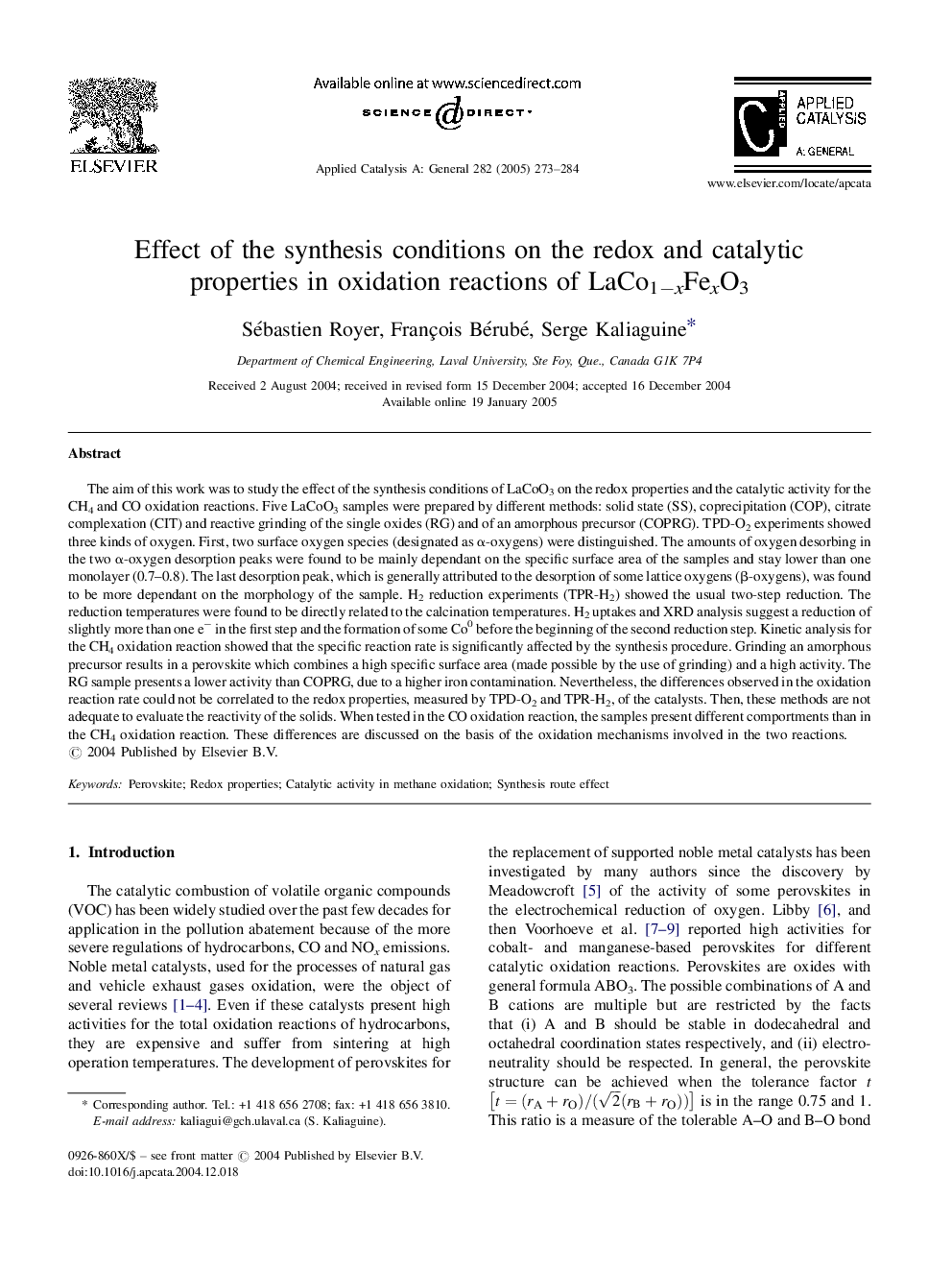| کد مقاله | کد نشریه | سال انتشار | مقاله انگلیسی | نسخه تمام متن |
|---|---|---|---|---|
| 9608063 | 46039 | 2005 | 12 صفحه PDF | دانلود رایگان |
عنوان انگلیسی مقاله ISI
Effect of the synthesis conditions on the redox and catalytic properties in oxidation reactions of LaCo1âxFexO3
دانلود مقاله + سفارش ترجمه
دانلود مقاله ISI انگلیسی
رایگان برای ایرانیان
موضوعات مرتبط
مهندسی و علوم پایه
مهندسی شیمی
کاتالیزور
پیش نمایش صفحه اول مقاله

چکیده انگلیسی
The aim of this work was to study the effect of the synthesis conditions of LaCoO3 on the redox properties and the catalytic activity for the CH4 and CO oxidation reactions. Five LaCoO3 samples were prepared by different methods: solid state (SS), coprecipitation (COP), citrate complexation (CIT) and reactive grinding of the single oxides (RG) and of an amorphous precursor (COPRG). TPD-O2 experiments showed three kinds of oxygen. First, two surface oxygen species (designated as α-oxygens) were distinguished. The amounts of oxygen desorbing in the two α-oxygen desorption peaks were found to be mainly dependant on the specific surface area of the samples and stay lower than one monolayer (0.7-0.8). The last desorption peak, which is generally attributed to the desorption of some lattice oxygens (β-oxygens), was found to be more dependant on the morphology of the sample. H2 reduction experiments (TPR-H2) showed the usual two-step reduction. The reduction temperatures were found to be directly related to the calcination temperatures. H2 uptakes and XRD analysis suggest a reduction of slightly more than one eâ in the first step and the formation of some Co0 before the beginning of the second reduction step. Kinetic analysis for the CH4 oxidation reaction showed that the specific reaction rate is significantly affected by the synthesis procedure. Grinding an amorphous precursor results in a perovskite which combines a high specific surface area (made possible by the use of grinding) and a high activity. The RG sample presents a lower activity than COPRG, due to a higher iron contamination. Nevertheless, the differences observed in the oxidation reaction rate could not be correlated to the redox properties, measured by TPD-O2 and TPR-H2, of the catalysts. Then, these methods are not adequate to evaluate the reactivity of the solids. When tested in the CO oxidation reaction, the samples present different comportments than in the CH4 oxidation reaction. These differences are discussed on the basis of the oxidation mechanisms involved in the two reactions.
ناشر
Database: Elsevier - ScienceDirect (ساینس دایرکت)
Journal: Applied Catalysis A: General - Volume 282, Issues 1â2, 30 March 2005, Pages 273-284
Journal: Applied Catalysis A: General - Volume 282, Issues 1â2, 30 March 2005, Pages 273-284
نویسندگان
Sébastien Royer, François Bérubé, Serge Kaliaguine,